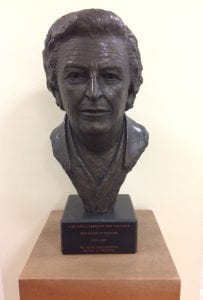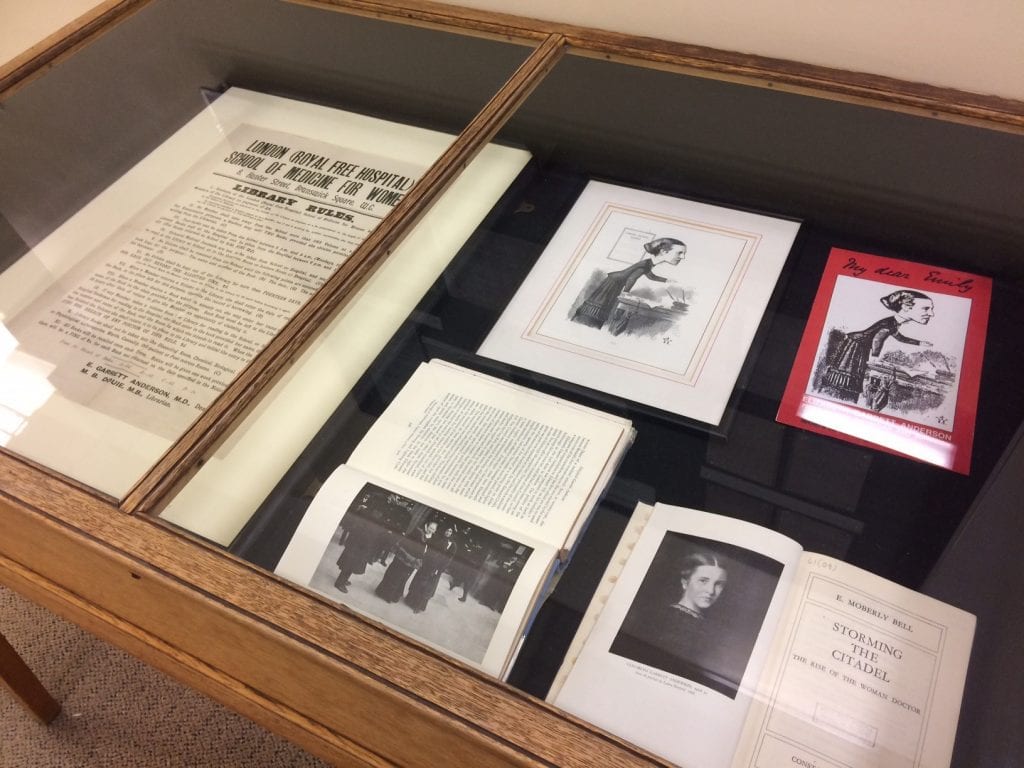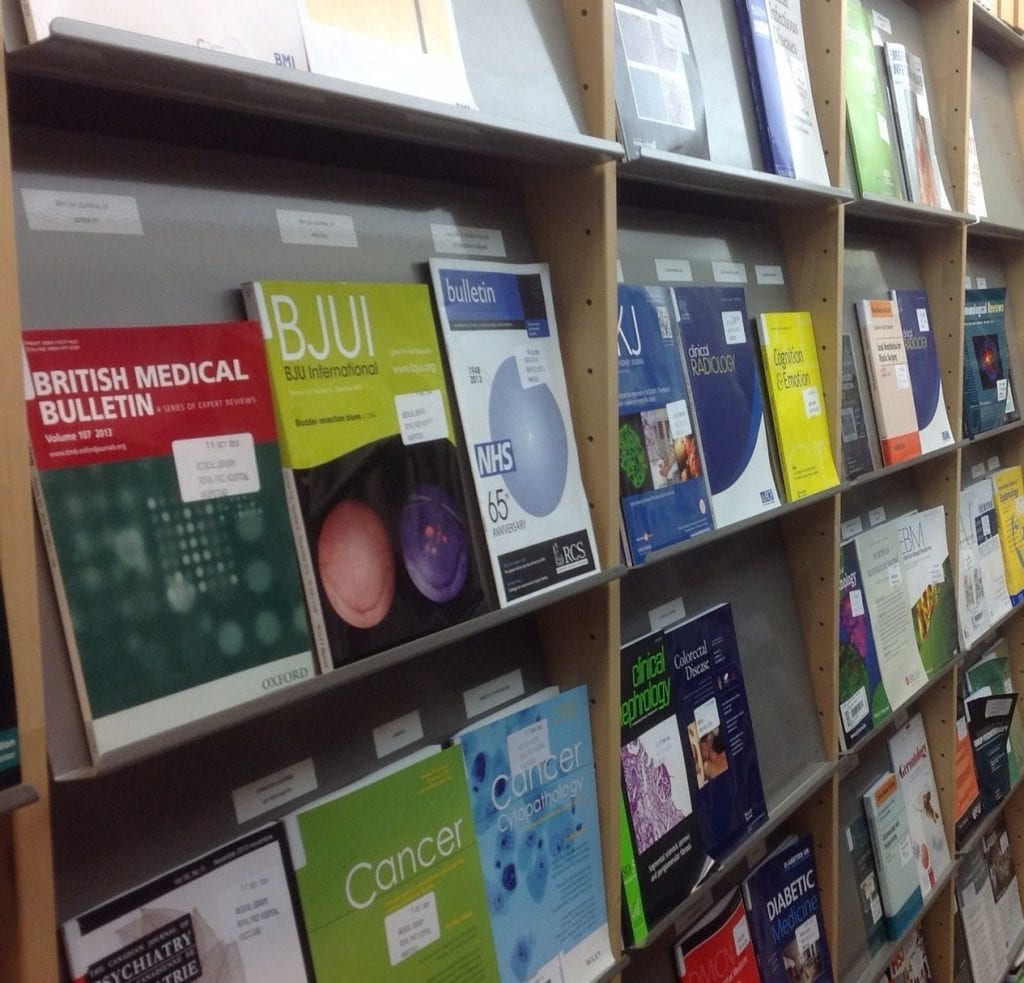Inspiration in the Library: Dame Sheila Sherlock
By ucylske, on 21 March 2017
Last month on the Royal Free Library blog we provided inspiration for our visitors with the fascinating piece of tangible history that is Elizabeth Garrett Anderson’s desk. If you have found yourself sitting here in contemplation, you may have noticed the striking bust that shares this space on the first floor of the Library (pictured). This bust represents the image of Dame Shelia Sherlock (1918-2001), another hugely monumental figure in the history of medicine.

Sheila Sherlock was born in Dublin in 1918 and brought up in Folkestown in the United Kingdom. In 1930s Britain it was still quite difficult for women students to enter into medicine, and Sheila applied to and was rejected by several medical schools. She ultimately received an offer from the University of Edinburgh in 1936, graduating five years later at the top of her class. Sheila’s specialist subject was in liver disease, and her immense talent was quickly reflected in her career path.
In 1948, at the age of thirty, she was appointed lecturer and honorary consultant physician at Hammersmith, setting up a new liver unit which attracted research fellows from many countries. In 1959, at the age of forty-one, she became Britain’s first female Professor of Medicine, when she was appointed to the chair at the Royal Free Hospital Medical School. At this stage in her career she had gained an international reputation as a pioneer in the new field of hepatology. She remained Chair of Medicine at the Royal Free until 1983. In March 2008, the liver treatment service at the Royal Free Hospital was re-named the Sheila Sherlock Liver Centre in her honour. The staff education centre in the hospital is also named after her.
So, on your next visit to the Library, take a moment to pause on the first floor and give a nod to one of the most instrumental and inspiring figures in Royal Free history.
Sources:
MCINTYRE, N. 2014. How British women became doctors: the story of the Royal Free Hospital and its Medical School, United Kingdom: Wenrowave Press.
ROYAL FREE LONDON NHS FOUNDATION TRUST. The Sheila Sherlock Liver Centre [Online]. Available: https://www.royalfree.nhs.uk/services/services-a-z/liver-services/the-sheila-sherlock-liver-centre/ [Accessed 20th February 2017].
 Close
Close




